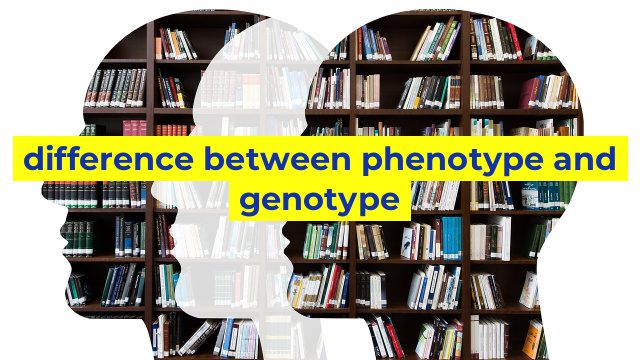Difference between Phenotype and Genotype
Genetic information plays a crucial role in determining the traits and characteristics of an organism. When talking about genetics, you may come across two terms: phenotype and genotype. Although these terms sound similar, they refer to two distinct aspects of an organism’s genetic makeup. In this article, we will explain the difference between phenotype and genotype.
Phenotype
Phenotype is the physical appearance of an organism resulting from the interaction between its genes and the environment. It refers to an organism’s observable characteristics or traits, such as eye color, height, skin color, and behavior. The phenotype of an organism is determined not only by its genetic makeup but also by environmental factors such as diet, exposure to sunlight, and exercise.
For instance, two individuals having the same genotype for eye color, one with brown eyes and the other with blue eyes, may have their differences due to environmental factors. The former may have brown eyes due to the accumulation of pigment caused by exposure to sunlight over time, whereas the latter may have blue eyes due to absence or less accumulation of melanin.
Genotype
Genotype refers to the genetic makeup of an organism, including all the genes inherited from its parents. It is the complete set of genes that determine an organism’s traits and characteristics. The genotype can be expressed as the combination of alleles inherited from each parent.
For example, the genotype of an individual for eye color could be represented by the combination of alleles they inherited from their parents, such as BB, Bb, or bb. BB represents the homozygous dominant form, which means that the individual will have brown eyes. Bb represents the heterozygous form, which means that the individual may have brown or blue eyes, depending on the dominance of each allele. Bb represents the homozygous recessive form, which means that the individual will have blue eyes.
Conclusion
In summary, phenotype refers to an organism’s observable traits resulting from the interaction between the genotype and the environment, while genotype refers to the genetic makeup of an organism, including all the genes inherited from its parents. A better understanding of the difference between genotype and phenotype is crucial in several fields, such as genetics, medicine, and agriculture, as it helps in predicting and understanding the inheritance patterns of traits and characteristics in offspring.
Table difference between phenotype and genotype
| Phenotype | Genotype |
|---|---|
| Physical characteristics or traits that can be observed or measured | The genetic makeup of an organism that determines its physical and behavioral traits |
| Can be influenced by environmental factors | Determined solely by the DNA sequence of an organism |
| Examples include eye color, height, and hair type | Expressed as combinations of alleles from the organism’s genes |
| Can vary within a population and change over time | Remains constant throughout an organism’s life |
| Phenotypic differences can be the result of genetic or environmental factors | Genotypic differences can be the result of mutations, genetic recombination, or genetic drift |


